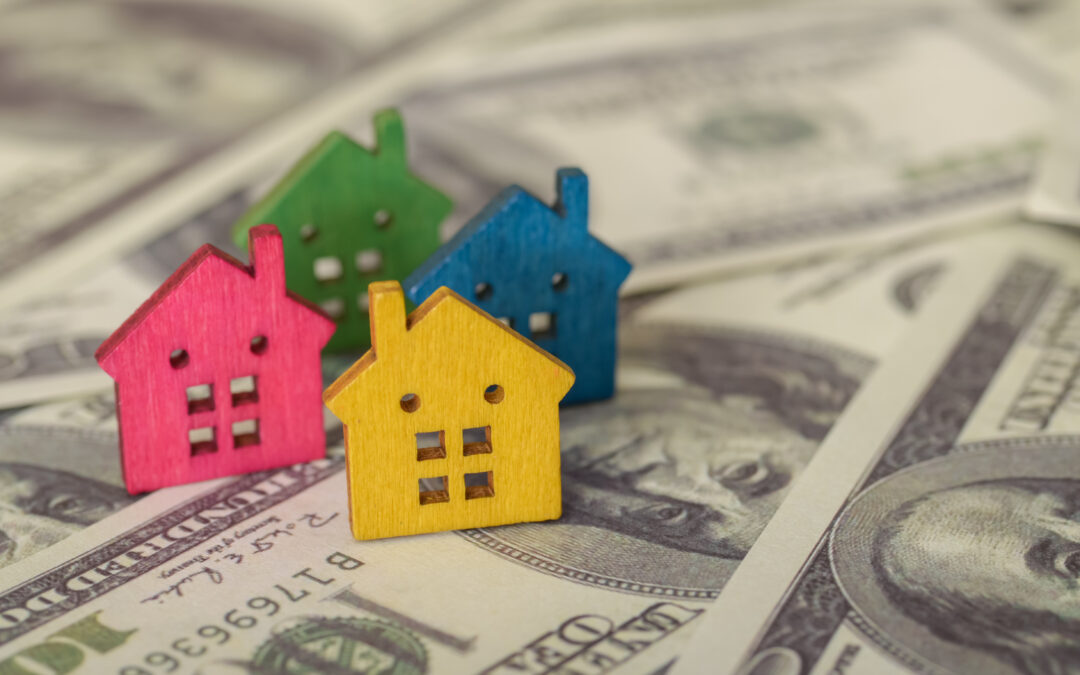What’s holding you back from starting or scaling your real estate portfolio? Many people stay on the sidelines because they believe they don’t have enough money to get started. However, there are many real estate financing options beyond traditional down payments.
Whether you’re flipping houses, building a rental portfolio, or investing in commercial properties, this blog breaks down 8 simple strategies to help you fund your deals!
- HELOC
- Second Mortgage
- Borrowing Against Your IRA
- Investing with Your IRA (Self-Directed IRA)
- Local Banks and Portfolio Loans
- Private Lenders
- Hard Money Lenders
- Friends and Family
1. HELOC: Leveraging Your Home’s Equity
A HELOC (Home Equity Line of Credit) allows you to borrow against the equity in your primary residence. It functions like a credit card—you only borrow what you need and pay interest only on the amount used. This flexibility makes it an excellent tool for real estate investors.
How It Works:
- Use a HELOC to cover a down payment, rehab costs, or even fund an entire deal.
- Pay off the HELOC when you sell or refinance the property.
- Immediately reuse the HELOC for your next investment.
Best for: Fix-and-flip projects, BRRRR investing, and rental property down payments.
2. Second Mortgage: Tapping Into Your Home’s Value
A second mortgage provides a lump sum loan using your home as collateral. Unlike a HELOC, the full amount is borrowed upfront, and interest begins accruing immediately.
Pros:
- Provides substantial capital for investing.
- Fixed payments offer predictability.
Cons:
- Higher interest rates than first mortgages or HELOCs.
- Requires making monthly payments regardless of investment performance.
Best for: Investors needing a lump sum for long-term projects like rental properties or commercial deals.
3. Borrowing Against Your IRA
You can borrow from your IRA to fund real estate investments. This can provide fast access to capital while keeping your retirement savings working for you.
- Two Ways to Use an IRA for Real Estate:
- Borrow against your IRA to purchase and renovate properties, then repay the loan.
- Invest through a self-directed IRA (SDIRA), which holds real estate inside the IRA structure for tax advantages.
Best for: Investors who have already built enough for a downpayment in their retirement account(s).
Related: How to Get Into Real Estate: 10 Dynamic Tips for New Investors
4. Investing with Your IRA (Self-Directed IRA)
A Self-Directed IRA (SDIRA) allows you to invest directly in real estate within your retirement account. This means the property is owned by your IRA, and all income and expenses flow through the IRA.
Benefits:
- Tax-deferred or tax-free growth (depending on IRA type).
- Diversifies your retirement portfolio beyond stocks and bonds.
Want to learn more about how to reach financial freedom and build generational wealth through real estate investing? Click the banner below to learn more about our upcoming workshop.
5. Local Banks & Portfolio Loans
Small, local banks often offer portfolio loans, which they keep in-house rather than selling to government-backed entities. These loans can be more flexible than traditional mortgages.
Why Consider Local Banks?
- Faster approvals and personalized lending terms.
- Willing to finance unconventional deals, such as fixer-uppers or mixed-use properties.
- Often open to creative financing solutions like cross-collateralization.
Best for: Everyone! Portfolio loans are especially advantageous to BRRRR investors, fix-and-flippers, and small multifamily property buyers.
Related: The Best Banks for Real Estate Investors: Portfolio Loans vs. Traditional Mortgages
6. Private Party Lenders
Private lenders are individuals who lend money to real estate investors in exchange for interest payments. They act like banks but with more flexibility and less red tape.
Example:
- An investor secures a $120,000 property but only needs $95,000 to purchase and rehab it.
- A private lender offers a loan at 8% interest, secured by the property.
- The investor completes renovations and either sells for profit or refinances for long-term cash flow.
Best for: Investors who want 100% financing without traditional bank restrictions.
7. Hard Money Lenders: Fast Financing at a Higher Cost
Hard money lenders provide short-term loans at high interest rates (12%-16%) but offer quick approvals and flexible terms.
Example:
- Loan amount: $95,000 (covers purchase and rehab).
- Costs: $1,900 (loan origination fee) + $3,800 (90-day interest).
- After-Repair Value (ARV): $120,000.
- Investor profit after sale: $19,300 (after loan repayment).
Best for: Investors needing fast capital for short-term deals.
8. Friends & Family Loans
If you have friends or family members interested in investing, they can provide funding under mutually beneficial terms.
How to Structure a Friends & Family Loan:
- Clearly define the interest rate and repayment terms.
- Use written agreements to protect both parties.
- Ensure consistent payments to maintain trust.
Best for: Any type of real estate investment where personal relationships allow for flexible financing.
In Summary…
These financing strategies apply to all types of real estate investing—whether you’re flipping houses, acquiring rental properties, or expanding into commercial real estate. The key is to match the right financing strategy to your investment goals and risk tolerance.
Want to learn how to execute these strategies effectively? Join us at our Real Estate Workshop, April 25-27 in Denver, Colorado, or via livestream! Click the banner below to learn more and register.




